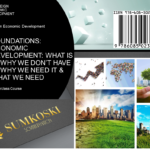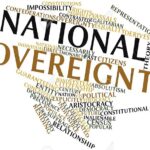

Whatever happens in Japan’s general election on Sunday, the nation’s leader has already signaled that the economy is losing momentum heading toward 2022.
That boss, by the way, is not Prime Minister Fumio Kishida, but Japan’s real leader – Haruhiko Kuroda.
As Kishida’s Liberal Democratic Party fumbles on, year after year, Bank of Japan Governor Kuroda has been running the globe’s third-biggest economy behind the scenes. And also tending to the job elected officials refuse to do themselves: attempting to boost wages and national competitiveness.
For now, at least. LDP premiers tend to be the Spinal Tap drummers of global leadership circles – “Here today, gone soon enough.”
Kishida’s predecessor Yoshihide Suga was a one-year man. Sure, Suga’s predecessor Shinzo Abe survived nearly eight years before handing the keys, briefly, to Suga. But the six governments before Abe’s all came and went in a 12-month blur.
Kishida has yet to convince LDP kingmakers that he, too, won’t be a short-timer.
The Cabinet that Kishida pieced together earlier this month is an island of misfit factional apparatchiks chosen to placate intraparty jockeying rather than winning their appointments on the grounds of merit.
Yet, Kishida’s LDP is a virtual lock for victory because Japan’s opposition is in a constant state of disarray.
So, a party that mishandled the economy for many years and botched the early response to Covid-19 will remain in power indefinitely. And Japan’s lengthy to-do list when it comes to raising competitiveness is almost certain to get longer.
This puts even more pressure on Team Kuroda to do politicians’ jobs for them.

Kuroda holds the fort
On Thursday, the BOJ left monetary policy alone and admitted its hopes of generating 2% inflation will have to wait at least two more years. (Its initial target for reaching 2% was 2015 …)
And fresh headwinds are coming. Japan’s factory output shrank for the third straight month in September, this time by 5.4%. Such downshifts, says Tom Learmouth, Japan economist at Capital Economics, are “posing clear downside risks to our view that quarterly gross domestic product growth was zero last quarter.”
The bottom line is the BOJ will continue to lag other monetary authorities in dialing back crisis-mode stimulus. In fact, odds favor Kuroda’s team adding more monetary stimulus, not tapering along with, say, the US Federal Reserve.
It’s a reminder, says Masamichi Adachi at UBS Securities, that “the BOJ is living in a totally different world as an outlier from the global trend.”
Irony abounds. Japan is finally getting some inflation. Only it’s the “bad” kind driven by spikes in global energy costs. Surging prices of commodity imports pushed Japan’s wholesale inflation to 13-year highs in September. So far, it hasn’t filtered through to consumer inflation, which is still stuck at zero.
Abenomics versus Kishidanomics
Kishida is staking his premiership on “a new type of Japanese capitalism” that targets the middle class over the wealthy. The strategy is actually a quiet rebuke of the 2012 to 2020 “Abenomics” era giving “trickle-down economics” another try.
Abe took office with a bold-sounding three-pillared plan of looser monetary policy, fiscal pump-priming and sweeping deregulation. Over time, it became clear that Abe only had the stomach for phase one: turbocharged monetary easing.
In 2013, Abe brought Kuroda back to Tokyo after eight years in Manila running the Asian Development Bank. Kuroda promptly channeled then-European Central Bank head Mario Draghi’s “whatever it takes” ethos and pushed quantitative easing into uncharted territory.
All the while, Abe dithered on structural reforms and hiked sales taxes twice. This meant Abe was really dabbling with Reaganomics with Japanese characteristics. Like former US President Ronald Reagan, Abe bet that as surging asset prices made the rich wealthier, the spoils would be shared widely and productively.
Even before the pandemic, that strategy was failing. Wages continued to flatline. CEOs reveling in a bull market in corporate welfare prioritized stock buybacks over sharing profits with the rank-and-file. Then, Covid-19 decimated the job prospects of the female workforce Abe had said he would make “shine.”
Now, Kishida is plotting his own big-talk-over-action revival strategy.
As explained so far, his new capitalism gambit closely mirrors South Korean President Moon Jae-in’s pledge to generate “trickle-up growth” in Asia’s No 4 economy. The plan is to realign tax and regulatory incentives from corporate giants to startups. The end result, as Moon articulated it, would be creating economic energy from the ground up, not the top down.

Kishida’s boldness deficit
So far, Kishida has demurred on bold upgrades. Nor has he explained how he plans to move beyond Abenomics without alienating Abe, whose behind-the-scenes support engineered Kishida into the top job.
“Although much has been read into Kishida’s policy framework, we see him as the continuity candidate,” says economist Stefan Angrick at Moody’s Analytics.
Investors would have much preferred the reform-minded Taro Kono to replace Suga – pushing the Nikkei Stock Average to 31-year highs in September to make their case. Instead, they got Kishida, an aggressively “safe” choice when that’s arguably the last thing Japan needs.
Investors also may be getting a prime minister with a weak mandate, limiting Kishida’s latitude to surprise everyone.
In the days ahead of Sunday’s election, much of the drama surrounds jockeying by coalition partners. A barrage of opinion polls suggests that for the first time in 12 years, the LDP might not be able to maintain its outright parliamentary majority.
If not, the party that’s ruled Japan with only two brief interruptions since 1955 would have to engage in political horse-trading to form a government. That would give other coalition leaders a seat at decision-making tables. It also might weaken the party’s ability to get big things done.
Not that the LDP exactly took big parliamentary majorities out for a ride before Sunday. But Kishida’s government faces some daunting challenges right out of the gate.
Post-polling day ‘to do’ list
The pandemic, for one thing. As Japan’s infection rates fall and vaccinations rates rise, the LDP is endeavoring to reopen the economy. That has health officials fretting yet another wave of Covid-19 infections, further delaying the return of travel, tourism and something approaching business as usual.
Stagnant growth, for another. South Korea has proved that taming the coronavirus is a prerequisite to economic recovery and recently, the Bank of Korea became the first major monetary authority to raise interest rates.
Japan, though, demonstrates the limits of Covid-19 mitigation. Though vaccinations rates have topped 70% and infections are falling, the economy is still on life support. This is largely thanks to pre-existing economic conditions — from an uncompetitive labor system to excessive bureaucracy to a fast-aging population.
Now, though, Kishida faces a policy wall of sorts.
In 2020, the Abe government threw $2.2 trillion, 40% of GDP, of fresh stimulus at the economy. That leaves limited fiscal space considering Tokyo’s debt-to-GDP ratio is approaching 250%.
Kishida could try to push through some big supply-side upgrades to reawaken Japan’s corporate samurai spirit. But if the LDP demurred when global growth was buoyant, from 2012 to 2019, how might the party summon the courage for disruption now?

BOJ to the fore
This leaves Japan’s de-facto leader — Kuroda — with some tough choices. Including how, and where, to add more fuel to the economy for the year ahead.
Some economists are encouraged by recent trends. “Comparing with the previous outlook report in July, the BOJ seems to be more optimistic in its outlook on the CPI ahead,” says economist Takeshi Yamaguchi at Morgan Stanley MUFG Securities.
“What’s particularly interesting,” Yamaguchi adds, “is that the BOJ indicated for the first time that it expects the output gap to turn positive during its forecast horizon. It paints a picture of rising prices as wages rise with higher inflation expectation in an adaptive manner, which we believe is a step further than in past phrases.”
Yet Japanese investors have seen this movie before. And whatever happens in Sunday’s election, and however much the politicians dither, “Prime Minister Kuroda” and his team at the BOJ are looking at a very challenging 2022.
The post Japan’s election won’t revive its moribund economy appeared first on Asia Times.




























